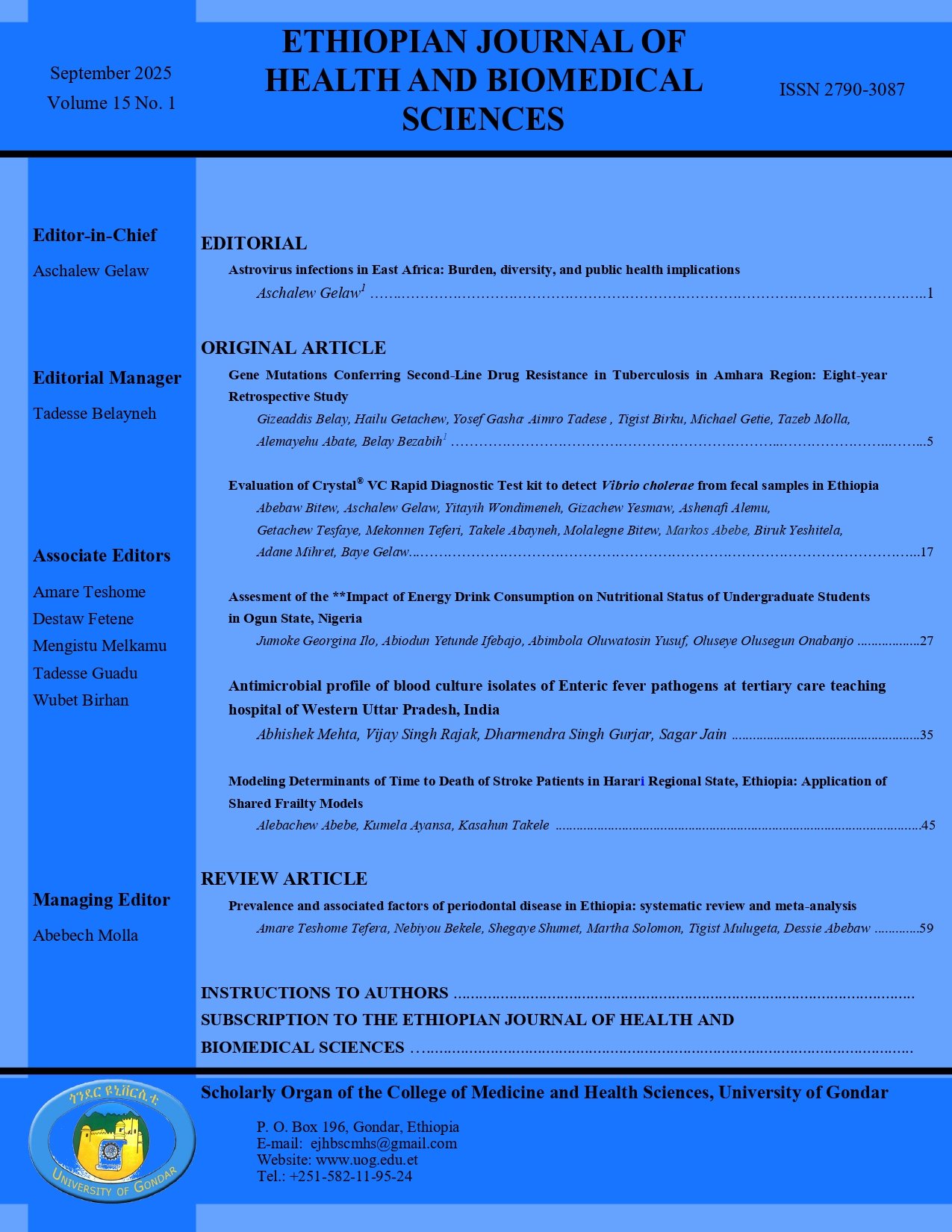Modeling Determinants of Time to Death of Stroke Patients at Harar Regional State, Ethiopia: Application of Shared Frailty Models
DOI:
https://doi.org/10.20372/ejhbs.v15i1.979Keywords:
Stroke Patients, Time-to-Death, Retrospective Study Design, Frailty Model, Shared Frailty ModelAbstract
Background: Stroke, a condition caused by interrupted blood flow to the brain, is the second leading cause of death worldwide and a major contributor to morbidity and disability. Despite its global impact, there remains a need for more comprehensive and flexible statistical models to better understand the timing of stroke-related mortality. This study addressed this gap by applying robust shared frailty models to stroke patient data.
Objective: The main purpose of this study was to identify the factors influencing time to death among stroke patients using shared frailty models, accounting for hospital-level clustering effects.
Methods: A retrospective study was conducted at Harar Regional State, Ethiopia, across three hospitals: Harar General Hospital, Jegol hospital, and Hiwot Fana Specialized University Hospital. A total of 224 stroke patients admitted to medical wards between September 1, 2020, and November 1, 2023, were included. Data was coded, cleaned, and entered in to SPSS version 25 and further analyzed using R-Studio. The presence of clustering (frailty) effects among hospitals was evaluated, and different shared frailty models were compared to identify the best-fitting model.
Results: Of the total 224 stroke patients, 51(22.77%) died during the study period, while 173 (77.23%) were censored. The median survival time was estimated at 14 days, highlighting the acute nature of the disease. The Weibull-inverse Gaussian shared frailty model provided the best fit for the data, accounting for unobserved heterogeneity across hospitals. Significant predictors of shorter time to death included hypertension (φ = 2.118; 95% CI: 1.145-3.917), cardiac disease (φ = 2.667; 95% CI: 1.343-5.296), diabetes mellitus (φ = 3.035; 95% CI: 1.1.560-5.906), atrial fibrillation (φ = 3.247; 95% CI: 1.619-6.511), and presence of basic complications (φ = 2.983; 95% CI: 1.477-6.023).
Conclusion: This study highlights the importance of hospital-level clustering effects in survival analysis of stroke patients. The significant frailty effect suggests variability in outcomes across hospitals, underlining the need for tailored interventions. Clinicians and hospital administrators should consider these differences when managing stroke patients, emphasizing timely follow-up, individualized care, and resource allocation to improve survival outcomes.
Downloads
Published
How to Cite
Issue
Section
License
Copyright (c) 2025 Alebachew Abebe, Kumela Ayansa, Kasahun Takele

This work is licensed under a Creative Commons Attribution-NonCommercial 4.0 International License.


